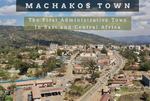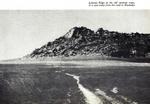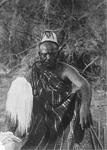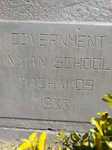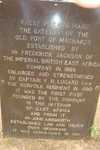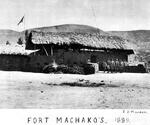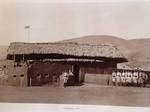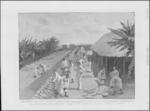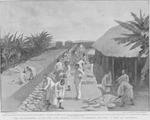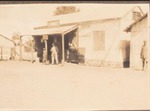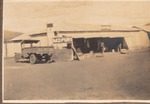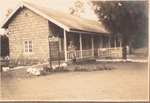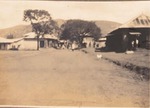Machakos
History of Machakos
In 1888, the IBEA Company first established an upcountry station at Nzoi then moved it to Machakos, which was named after the local Kamba Chief, Masaku, a big hairy man who lived on Kilima
Mimwe, a lone hill on the Ivetti range east of the current town.
A legend foretold by Syokiman, a local prophet, spoke of the coming of strangers with fire in their pockets, and also the coming of fire-eating snake (the railway) . Masaku, in an effort to frighten away the Europeans, initially instructed his people to extinguish any attainable fire, thus to deprive the newcomers of their bore necessity.(Muthaiga)
Raid On Fort Machakos (By HistoryKe)
In 1892, Fort Machakos had an administrator, George C. Leith.
The Kamba didn’t like him one bit.
Leith, a man who loved his whisky, was loathed because he had a habit of grabbing supplies from the Kamba and making no payments for them.
Then he did something that the Kamba considered to be absolutely sacrilegious: he felled an Ithembo tree at the summit of Iveti hills.
See, the Ithembo was a hallowed tree, a shrine of sorts, that was to the Kamba what the Mûgumo was to their neighbours the Agîkûyû.
The Kamba reacted angrily. A few hundred warriors assembled and attacked Fort Machakos. The few European offices at the Fort scattered the warriors with rifle fire, killing an unknown number of Kamba men.
The attack rattled the Imperial British East Africa Company (IBEAC) who, following a quick probe in the aftermath of the skirmishes, decided that Leith was no longer needed at Fort Machakos.
That same year, John Ainsworth, took over the reins at Fort Machakos.
The last photo, taken circa 1912, is of a Kamba elder that the photographer, Gerhard Lindblom, referred to as Chief Kitui. I wonder if this is the
man who gave Kitui County its name.
Fort Machakos gate with Sudanese Guard-1897. Machakos (originally called ‘Masaku’ in the Kamba language) was established as IBEA’s first inland trading station and became the site of the first up-country. European settlement in 1894. Until the Uganda Railway selected Nairobi as their terminal, Machakos was destined become the primary city of the Protective. By 1899, most commercial activities had relocated to Nairobi.(Muthaiga)..
Colonial relic that defines county’s powerful centre of administration
The roughly hewn wooden planks standing at the heart of the ancient town hint of a glorious past when it had an impenetrable fort.
https://www.standardmedia.co.ke/eastern/article/2001317928/the-colonial-relic-machakos-abandoned
Machakos
The British had decided to build a new railway to mark its territory from the Kenyan coast to Uganda and had in 1891 sent Captain J. R. L. Macdonald to carry out a preliminary survey of the
line. It was Macdonald who recommended the building of a 3 foot 6 inch railway — by then the standard in all British empires and Japan too.
And then the mistakes began.
The first town to be created was Machakos, a town that had been planned to be the future capital of Kenya and was by then the headquarters of Imperial British East Africa Company (IBEA),
which was administering the interior on behalf of London.
TWO PILLARS
If you visit Machakos town and venture outside the local police station, you will see two pillars and an engraved marker at what was once the entrance to the Machakos Fort. This was the original headquarters of commerce and politics in Kenya.
But the railway did not pass through Machakos for a number of reasons. First, a famine had killed a third of locals and hence the engineers feared they would not get labour and secondly,
there was deep suspicion between IBEA officials and the railway engineers.
For that omission, IBEA Commissioner John Ainsworth — who was running a broke company — never forgave railway engineer George Whitehouse. It was Ainsworth who would be forced by London to follow the railway and establish what is today Nairobi. Here, he found that another IBEA official Francis Hall of Fort Smith Dagoretti had befriended the “railway people’ and ordered him to return to Machakos. Hall had never hidden his dislike for Ainsworth and once wrote: “These fellows, brought up behind a counter, get too big for their boots and make life unbearable for others.”
'SOCIAL SNOB'
Hall was a “social snob” too and even looked down at Ainsworth’s American wife, Inca, for the simple reason that Inca’s sister was married to Hall’s cashier! It was this contempt that would eventually see Hall later transferred to Murang’a in 1900 where he established the modern-day town, which until independence was known as Fort Hall. He only stayed there for one year and died of dysentery aged 32.
https://nation.africa/kenya/news/the-lunacy-and-legacy-of-the-metre-gauge-railway-405804
Odhiambo Levin Opiyo collection







